
IBEC
FUNDACIO INSTITUT DE BIOENGINYERIA DE CATALUNYA, Spain
CARRER BALDIRI REIXAC PLANTA 2A 10-12, Barcelona 08028
PROJECT COORDINATOR
Department carrying out the proposed work:
Biomimetic systems for cell engineering group
CARRER BALDIRI REIXAC 15-21, 08028 Barcelona
Person in charge of the proposal:
Elena Martínez · emartinez@ibecbarcelona.eu
Group leader, Biomimetic systems for cell engineering group
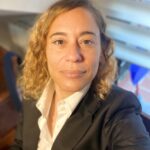 |
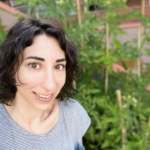 |
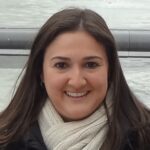 |
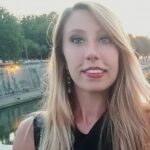 |
| Dr. Elena Martínez Principal Investigator emartinez@ibecbarcelona.eu |
Dr. Núria Torras Scientific coordinator ntorras@ibecbarcelona.eu |
Dr. Livia Neves Postdoc lborgheti@ibecbarcelona.eu |
Angela Cirulli PhD student acirulli@ibecbarcelona.eu |
The Institute for Bioengineering of Catalonia (IBEC) is a research institute covering most bioengineering fields, from basic research to medical applications, aiming to act as an international reference in this field. The institute has also established close links with international research centres, universities, hospitals and industry to exchange talent, and develop and execute projects. IBEC was established in 2005 by the Government of Catalonia, the University of Barcelona (UB) and the Technical University of Catalonia (UPC) and is located at the Barcelona Science Park (PCB, www.pcb.ub.eduwww.ibecbarcelona.eu/biomsyscelleng) sharing also facilities with the Bellvitge University Hospital (BUH). IBEC hosts around 250 researchers and technicians, which are part of its own staff or are associated to the UB and UPC or coming from different recruitment programs of research staff (e.g. ICREA and others). Within IBEC, the “Biomimetic Systems for Cell Engineering” group, headed by Dr. Elena Martínez is a multidisciplinary research group focusing its research activities on the development and application of new artificial systems that mimic tissue micro- and nano-features for more biomimetic in vitro assays. Within this field, the specific research lines are: i) development of new nano-patterned surfaces that allow for the study of ligand clustering on receptor signalling, ii) development of new techniques to microstructure hydrogels for the fabrication of biomimetic epithelial barriers, iii) fabrication and application of gradient surfaces and iv) fabrication and application of mini-bioreactors that incorporate multiple signalling (mechanical, chemical and electrical) to stem cells for cardiac differentiation. Moreover, the group has established several fruitful collaborations at the national and international level, including, Dra. Margarita Calonge (University de Valladolid), Dra. Núria Montserrat (CMRB), Prof. Angel Raya (CMRB), Dr. Matthew Dalby (University of Glasgow), Prof. Daniel Riveline (University of Strasbourg), Dr. Eileen Gentelman (King’s College London), Prof. Molly Stevens (Imperial College London), Prof. François Rossi (JRC Ispra) and Prof. Vasco Teixeira (University of Minho).
Role in the project
IBEC group is a multidisciplinary research group focusing its research activities on the development and application of nanotechnology to the development of new artificial systems that mimic tissue micro- and nano-features for more biomimetic in vitro assays
GUF

JOHANN WOLFGANG GOETHE-UNIVERSITATFRANKFURT AM MAIN, Germany
THEODOR W ADORNO PLATZ 1, Frankfurt AM MAIN 60629
Department carrying out the proposed work:
Physical Biology, Max-von-Laue-Str. 15, Frankfurt am Main, D-60438 Germany
Person in charge of the proposal:
Francesco Pampaloni · fpampalo@bio.uni-frankfurt.de
Group leader, Physical Biology group
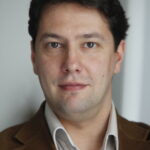 |
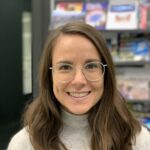 |
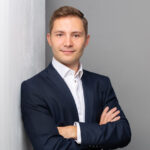 |
| Dr. Francesco Pampaloni Principal Investigator fpampalo@bio.uni-frankfurt.de |
Louise Breideband PhD student breideband@bio.uni-frankfurt.de |
Levin Hafa PhD student hafa@bio.uni-frankfurt.de |
The Goethe University Frankfurt (GUF) is a research-oriented university in the European financial centre Frankfurt founded in 1914 with purely private funds by liberally-oriented Frankfurt citizens, it is dedicated to research and education under the motto «Science for Society» and to this day continues to function as a «citizens’ university». Many of the early benefactors were Jewish. Over the past 100 years, Goethe University has done pioneering work in the social and sociological sciences, chemistry, quantum physics, brain research and labour law. It gained a unique level of autonomy on 1 January 2008 by returning to its historic roots as a privately funded university. Today, it is among the top ten in external funding and among the top three largest universities in Germany, with three clusters of excellence in medicine, life sciences and the humanities.
The Buchmann Institute for Molecular Life Sciences (BMLS) was founded in 2009 at Goethe University Frankfurt as part of the Cluster of Excellence Frankfurt Molecular Complexes. The focus of the institute is understanding the molecular mechanisms underlying cellular functions. The Institute is composed of twelve scientific groups from various disciplines including biology, physics, chemistry, and medicine.
A major goal of the Physical Biology Group (http://www.physikalischebiologie.de/) is to pursue experiments in the life sciences under close-to-natural conditions and to quantitatively evaluate the results. To this aim, we develop innovative fluorescence microscopes. The group has pioneered the application of Light Sheet Fluorescence Microscopy in cell and developmental biology. We employ physiologically relevant cellular models for both fundamental and applied as well as translational research. We collaborated with major industrial partners (Bayer -Berlin, Lonza -Maastricht, Zeiss -Jena) and smaller biotechnology companies (Spherotec, München; Insphero, Switzerland) as well as with academic partners at the Max-Planck-Institutes for Cell Biology and Genetics (Dresden) and for Brain Research (Frankfurt am Main) and the Goethe University Clinics. We have employed cellular spheroids as models for the development of healthy tissues as well as models for tumor growth. We investigate stem cell pancreas organoids for the cellular therapy of Diabetes Type 1 (project EU Horizon2020 project LSFM4LIFE) and liver tumor organoids for cancer personalized medicine (InnoSysTox Grant, project Onconoid Hub).
MYCRONIC
![]()
MYCRONIC AB, Sweden
NYTORPSVÄGEN, 9, Täby 183 03
Department carrying out the proposed work:
Technology Development/R&D, Nytorpsvägen 9, Täby, 183 03 Sweden
Person in charge of the proposal:
Gustaf Märtensson · gustaf.martensson@mycronic.com
Expert Complex Fluids
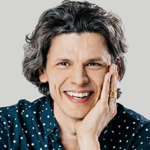 |
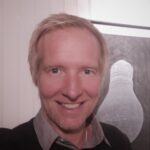 |
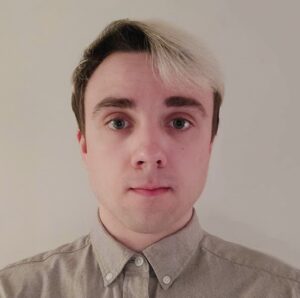 |
| Gustaf Märtensson Expert Complex Fluids gustaf.martensson@mycronic.com |
Robert Eklund Product manager robert.eklund@mycronic.com |
Jokūbas Stančikas Laser engineer jokubas.stancikas@mycronic.com |
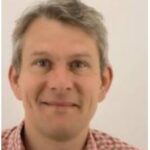 |
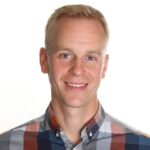 |
| Pontus Stenström Senior specialist pontus.stenstrom@mycronic.com |
Martin Glimtoft Lithography specialist martin.glimtoft@mycronic.com |
Mycronic is a Swedish high-tech company that has been active in the electronics industry for more than 30 years. The global organization with subsidiaries, agents and distributors supports industry leaders in more than 50 countries. The global footprint ensures that Mycronic has a deep market understanding and can provide rapid support for all their customers who rely on an efficient production. The company has above 900 employees, 450 patents, and more than 2500 customers. Mycronic creates world-leading production equipment for electronics and display manufacturing. Headquarters in Täby, north of Stockholm, Sweden. Local presence in more than 50 countries. 25% of the workforce in R&D. Wholly owned subsidiaries in China, France, Germany, Japan, Singapore, South Korea, Taiwan, the Netherlands, the United Kingdom and the United States. Owner of Shenzhen Axxon Automation Co., Ltd (80%), Automation Engineering, Inc. (100%), RoyoTech Digitalelektronik GmbH (100%) and Vi TECHNOLOGY S.A.S (100%). Listed on NASDAQ, Stockholm, Mid Cap. Certified to ISO 9001:2015/ ISO 14001:2015
For producers of advanced flat screen displays, the Mycronic technology is indispensable. The same holds true for some of the most agile and responsive circuit board manufacturers, who use Mycronic machines to produce a wide variety of the most complex boards in the world. And the automotive industry use Mycronic’s fully automated production systems to assemble and test the camera modules used in Advanced Driver Assistance Systems (ADAS) in today’s and tomorrow´s cars. The heavy investments in R&D is an indication of Mycronic’s commitment to continuous innovation.
Role in the project
Digital photomasks will be used to generate patterned light sheet. The patterning is obtained by integrating in the DSLM the advanced acousto-optic modulator (AOM) system by MYCRONIC, which combines high resolution with short writing times. A dedicated data channel and control software will need to be developed. What Mycronic brings to BRIGHTER is a long experience in developing high precision optical pattern generators Mycronic will provide knowledge and manpower for system design for pattern generators as well as for pattern generator optics, servo, data channel and system control software.
CELLENDES

CELLENDES GMBH, Germany
MARKWIESENSTR 55, Reutlingen 72770
Department carrying out the proposed work:
Research & Development department
MARKWIESENSTR 55, Reutlingen 72770
Person in charge of the proposal:
Helmut Wurst · helmut.wurst@cellendes.com
Executive Manager, Research & Development department
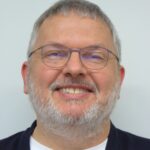 |
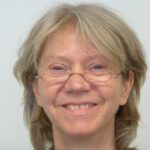 |
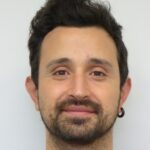 |
| Helmut Wurst Co-founder helmut.wurst@cellendes.com |
Brigitte Angres Co-founder brigitte.angres@cellendes.com |
Gabriele Di Napoli Technical assistant dinapoli@cellendes.com |
Cellendes offers a hydrogel technology that comprises synthetic or non-animal derived defined components that enables the researcher to design extracellular environments for 3-D cell culture. Gels can be adapted in stiffness and biomimetic functions for specific (cell culture requirements) cell types, cell co-cultures, and multicellular structures. Areas of application are basic research, cell-based assays and in vitro tissue models. Founded in 2009 by Dr. Brigitte Angres and Dr. Helmut Wurst, Cellendes manufactures and commercializes hydrogels for 3-D cell culture since 2010. Cellendes’ hydrogel technology offers an extraordinarily high flexibility in gel composition and manipulation of physical gel properties. It comprises synthetic or non-animal derived defined components suitable for the development of therapeutic products.
Cellendes is a privately-owned biotechnology company founded in 2009 by Dr. Brigitte Angres and Dr. Helmut Wurst. It is a spinoff of the NMI Natural and Medical Sciences Institute at the University of Tübingen (NMI), where the founders developed Cellendes’ core technology. The company specialises in the development of biomimetic hydrogel systems for three-dimensional cell culture with expertise in:
• chemical modification and purification of proteins and polymers as components for hydrogels for 3-D cell culture systems,
• design of peptides as factors for controlling cellular phenotype in 3-D cell culture systems,
• development of 3-D cellular assays.
Furthermore, Cellendes has expertise in chemical, biochemical, as well as molecular biology assays.
Cellendes manufactures and commercializes hydrogels for 3-D cell culture since 2010. Cellendes’ hydrogel technology offers an extraordinarily high flexibility in gel composition and manipulation of physical gel properties. It comprises synthetic or chemically defined components suitable for the development of therapeutic products.
Role in the project
Cellendes is a life science company offering comprehensive solutions for controlled design of cell environments in 3-D cell culture.
TECHNION

TECHNION – ISRAEL INSTITUTE OF TECHNOLOGY, Israel
SENATE BUILDING TECHNION CITY, Haifa 32000
Department carrying out the proposed work:
Genetics & Developmental Biology
1 Efron Street, 31096 Haifa, Israel
Person in charge of the proposal:
Ruby Shalom-Feuerstein · shalomfe@technion.ac.il
Group leader, Genetics & Developmental Biology department
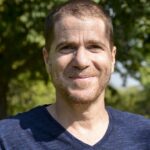 |
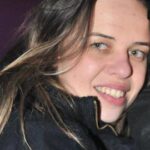 |
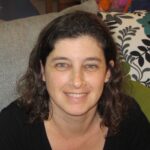 |
| Ruby Shalom-Feuerstein Principal Investigator shalomfe@technion.ac.il |
Anna Altshuler Postdoc anna.altshuler@gmail.com |
Aya Amitai-Lange Research associate and lab manager langeaya@gmail.com |
The Technion – Israel Institute of Technology has been Israel’s primary technological university and the largest centre of applied research. It is ranked among the leading technological universities in the world (32nd for Technical Sciences, 33rd for Natural Sciences from the ‘QS World University Rankings 2009). Many innovations in all fields of science, technology, engineering and life sciences have their origins in research conducted at the Technion. Technion researchers have won many prestigious international awards over the years, including three Nobel prizes awarded to Technion researchers in the last decades; the Chemistry Nobel prize awarded to distinguished professor Dan Shechtman in 2011, for the discovery of quazi-crystals and the Chemistry Nobel prize In 2004 to Distinguished Professors Avram Hershko and Aaron Ceichanover, for their pioneering research on degradation of intracellular proteins. Within the Technion, the RS-F group, headed by Prof. Ruby Shalom-Feuerstein is focused on the study of fundamental and translational research of skin, corneal and pluripotent stem cells. They developed pluripotent stem cell disease models for skin/corneal congenital pathologies and discovered potential therapy by small molecular weight compound that is now studied in clinical trial. They also established new genetic mouse models for stem cell identification and lineage tracing, and loss-of-function and gain of function of genes that regulate stem cell function. Moreover, the group has established several fruitful collaborations at the national and international level, including, Prof. Eyal Gottlieb (Technion), Dr. Carmit Levy (Tel Aviv University), Prof. Gerry Melino (Italy), Prof. Daniel Aberdam (France), Prof. Matthew Poy (Germany), Dr. Yoel Kloog (Tel Aviv University) and more
Role in the project
RS-F group has large expertise in stem cell biology with special emphasis on skin and corneal stem cell research. They will be in charge of sharing the knowledge of stem cell culture and providing the cellular models, scientific knowledge about stem cell biology and collaborate on the fabrication and testing of the new engineered tissues using the biomaterial scaffold to be developed by the bio-engineering experts.
